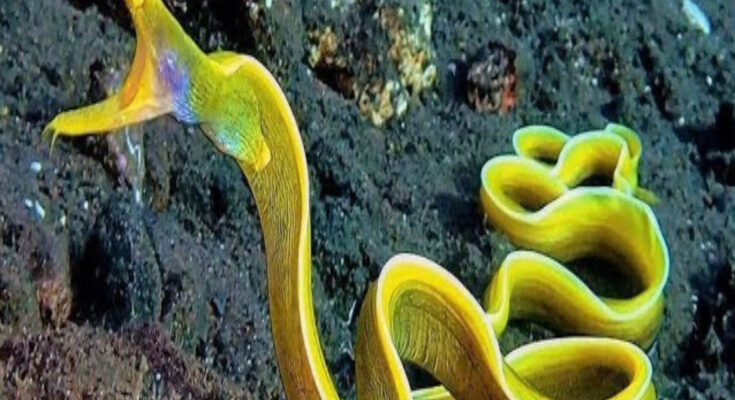Sure, here are descriptions of 10 fascinating sea creatures that might be lesser-known to many people:
1. **Barreleye Fish (Macropinna microstoma):**
– Found deep in the ocean, this fish is known for its transparent head and tubular eyes that can rotate within its transparent shield.
2. **Blanket Octopus (Tremoctopus spp.):**
– The female blanket octopus is significantly larger than the male and can have a “blanket” of skin that stretches between its arms, which it can unfurl to intimidate predators.
3. **Mimic Octopus (Thaumoctopus mimicus):**
– Able to mimic the appearance and behavior of other animals, including toxic ones like lionfish and sea snakes, to deter predators.
4. **Leafy Sea Dragon (Phycodurus eques):**
– Found in Australia, it resembles seaweed with leaf-like appendages all over its body, providing excellent camouflage in seaweed beds.
5. **Goblin Shark (Mitsukurina owstoni):**
– Known for its distinctive long, flat snout and protrusible jaws filled with needle-like teeth, found in deep-sea environments worldwide.
6. **Hooded Nudibranch (Melibe leonina):**
– A type of sea slug found along the Pacific coast of North America, with a translucent body and a large “hood” over its head that it uses to capture plankton.
7. **Giant Isopod (Bathynomus giganteus):**
– Resembling a large pill bug, these deep-sea creatures are related to shrimp and crabs, growing up to sizes of over a foot long.
8. **Vampire Squid (Vampyroteuthis infernalis):**
– Despite its name, it’s not a true squid nor a vampire. It has large eyes, dark coloration, and a unique webbing between its arms, giving it a cloak-like appearance.
9. **Fangtooth Fish (Anoplogaster cornuta):**
– Inhabiting deep ocean waters, it has extremely large teeth relative to its body size, which it uses to catch prey in the dark depths.
10. **Glass Squid (Teuthowenia pellucida):**
– Transparent and nearly invisible in the water, these squid have a glass-like appearance and bioluminescent organs that help them camouflage and attract prey.
These sea creatures showcase the incredible diversity and adaptations found in the world’s oceans, each playing unique roles in their respective ecosystems.



